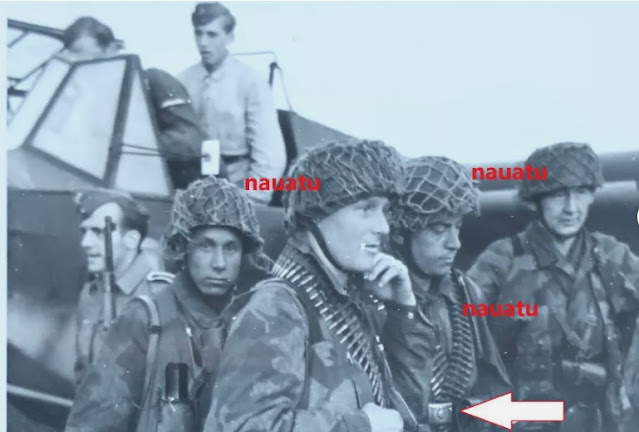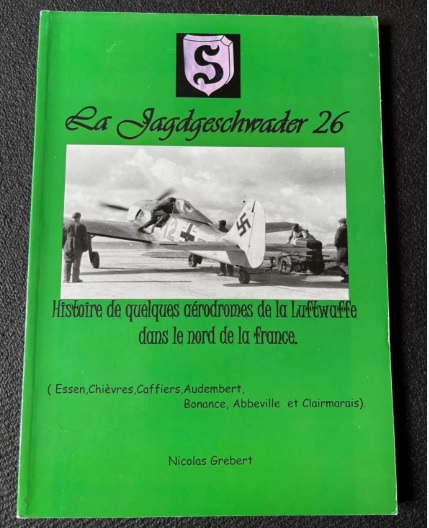Volume 2 of 'Axis Wings' is here! Volume I received high praise and Volume 2 should be no different. The 'Luftwaffe and co-belligerent air forces compendium' once again draws on the talents of some well known names in the Luftwaffe research and writing community (eg, Beale, Arthy, Hermann, Steenbeck etc) and has been put together by the same editorial 'experts' largely responsible for the reputation that Classic Publications enjoys. A Chandos masterstroke!
Volume 2 is another densely-packed issue consisting of 184 A-4 pages between stiff card covers and a nice thick spine. At a guess, word count must be north of 100,000 - there's an incredible amount of reading here. Production values, maps, photos, Swiatlon profile artworks, the quality goes without saying. If there is one noticeable innovation in Vol 2 then it seems that the editor has included a range of features covering more technical themes as well as the 'usual' operational and biographical articles; Dietmar Hermann on the DB 603-engined versions of the Fw 190, Martin Streetly details the history and development of the various Luftwaffe AI search radar 'families' while Gordon Slater covers the history of the Ruhrstahl X-4 air-to-air missile and Martin Frauenheim writes about the achievements of German rocket pioneer Reinhold Tiling - the images of the Klemm monoplane with two metre long rockets slung under the wings are noteworthy! And not forgetting Huib Ottens on Siegfried Knemeyer, of the RLM's Technical Department..
Volume 2 also has something of an Eastern Front 'flavour'. Biographical articles cover leading Eastern Front nightfighter Gustav Francsi (rare images of NJG 100 Ju 88s, profile artwork and a full claims list) while Alexander Steenbeck has Part II of the life of Fritz Krey of SG 2. There is a lengthy piece on JG 54 pilot Hans-Helmut Habermehl - a first-to-last fighter pilot - covering pre-war training to his death in April 1945 via a forensic examination of his log-book, including the court martial!
Operational features focus on a range of subjects. One of the best is the coverage of the activities of close-range recce unit NAGr. 4 over the Eastern Front . The reader will probably find himself wondering what purpose battlefield reconnaissance served at all when three German armies were wiped out in the first ten days of Bagration, including Busch's 3rd Panzerarmee around Vitebsk. Any orders to fall back arrived far too late - reluctantly issued given Hitler's 'fester Platz' policy. Bagration - launched on 22 June 1944 - was an immense Soviet offensive, involving 1.2 million men, which resulted in the 1,000 km long front held by Heeresgruppe Mitte literally imploding. Author Arthy details the daily sorties flown by NAGr. 4 pilots deep behind the lines, where they observed ".. the heart-wrenching sight of cut-off German troops attempting to flee westwards.." On occasion they even got into dogfights with Soviet aircraft. Eighty kms south of Vitebsk at Orscha there was a crushing defeat for Kurt von Tippelkirch's 4th Armee just four days into the offensive and a similar fate awaited 9th Army even further south along the front around Mogilev/Bobruisk. On the morning of 30 June, Staka 1./NAGr. 4, Hptm. von Kamptz spotted around 5,000 men from 4. Panzerarmee trapped on the wrong side of the Beresina river (near Beresino) and organised a supply drop. Almost certainly these men - or those that survived - were among the 57,000 German POWs that Stalin had parade miserably through Moscow on 17 July. For this reader the 'Bagration' map on p137 (Nahaufklarungsgruppe 4 area of operations, June-July 1944) is superb, one of the best I've seen anywhere (credited to 'The Map Archive') In fact maps are a strong suite of this publication. There's another good one in Nick Beale's Me 262 recce ops feature, while the colour reproduction of those Me 262 images is also particularly fine. There are two 'interactive' features - the 'Photo Album' section at eight pages invites comment and additional info - photos are reproduced large in most instances across the page - while Volume 2 has a 'Reader Feedback' page and a page devoted to book reviews which is most welcome. I wonder whether the editor would consider covering some 'older' volumes?
To conclude, a couple of points that struck this reviewer;
1/ I'm no graphic designer but I am struggling to see the reasoning behind the contents listing on the front jacket/cover. Surely you need to save some 'surprises' for the potential purchaser or just 'hint' at what might be inside to draw in the enthusiast 'sitting on the fence' as my friend Simon put it? But then again I imagine that 'Axis Wings' sells out quickly enough as it is, quick enough for that to not really be an issue. And as has been pointed out to me, journals such as International Air Power Review or World Air Power always had a cover contents listing - even if it was the rear cover in the case of those two journals. This makes for a very 'reader-friendly' publication - the reader can do a quick check of the contents just by pulling it from the shelf..
2/ I'm not sure that 3-4 pages (in total) of bibliographic references/footnotes are what I want to see in a journal - that 'space' could be used for another feature. Not every article has them of course so why not perhaps group together all references/acknowledgments etc on a single page right at the end of the book?
Needless to say these are minor gripes and I'm sure the editor and manager have thought long and hard about aspects such as these when compiling their publication.
I've read that the success of 'Axis Wings' very much depends on how well the journal is received, so do go and get a copy before you miss out! Judging by the inside back cover the good news is that 'Axis Wings Vol 3' is in preparation. And if you missed Volume I - covered elsewhere on this blog - a limited reprint means that copies are available from Chandos right now. As I've said before any new publication from Chandos is an 'event' and 'Axis Wings 2' is no exception!
Chandos Publications are
here
























